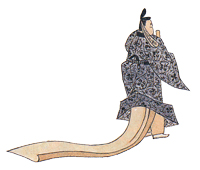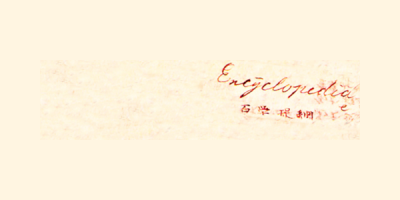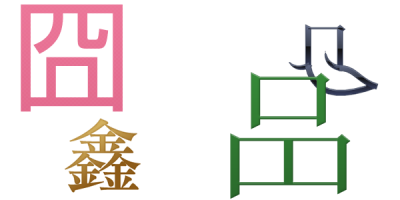
It is not good to have an inconsistent character. But there is nothing embarrassing about changing your character in the context of play. After all, you’re only playing.
Even as I write this, someone is writing on the Internet “Sessha doraibu ni itte kita de gozaru” (We have been out for a drive). Words like “sessha” and “de gozaru” convey a “samurai” character, but it is not as if this writer spends his everyday life in this character. The very fact that he’ s going for a drive pretty much destroys his “samurai” aspirations. That is, the “samurai” character you can see in such writings is a character he has temporarily deployed; it is an alternative to his original character. But this is fine, as he’ s only “playing” (de gozaru).
On the Internet there is no shortage of people adopting the “Heian aristocrat” character (or the Ojarumaru(1) anime character which is modeled on it), by using expressions such as “maro” and “de ojaru.” The people writing these expressions do not spend their daily lives in the “Heian aristocrat” character; it is a character they have temporarily adopted. In other words it is an alternative to their original characters. But this is no problem. They’ re only playing (de ojaru).
Just before I began this series, Fujio Akatsuka passed away, so in part 1 we looked at expressions such as “Mii wa kanemochi zansu” (Me am rich zansu!), and “Ore to kekkon shiro nyarome!” (Marry me Nyarome!). Let’ s consider these one more time. It is quite reasonable that we sometimes suddenly throw aside our everyday characters and switch to an “Iyami” character, or rather change characters altogether, saying “Mii wa korekara jugyou zansu” (Me am going to class) as a joke that is, in play. But it probably wouldn’ t due for a character, such as Iyami, to say “Ore wa kanemochi da nyarome” in a situation that called for “Mii wa kanemochi zansu” in the manga. Iyami’ s catchphrase “Mii wa kanemochi zansu” is not play.
This sort of “playful character switching” is not something that began with “aberrations in modern parlance.” We have been doing it since the days of yore.
In Kazuo Dan’ s (1912–1976) Kataku no Hito (1961–1975), the protagonist’ s girlfriend usually uttered phrases such as “What do think? Aren’ t I gorgeous?” But in one scene, she suddenly adopts a “yakuza” character, sitting down cross-legged, slapping her thighs and demanding “Oi? Itsu ore o yome ni moratte kuren da yo?” (Hey! When you gonna marry me?!) while pursuing his hand in marriage. Although we might not perceive it as such now, at the time this was a “humorous demonstration” of the impatience the girlfriend was feeling. In other words, she was playing.
In Osamu Dazai’s (1909–1948) “Haru no Kareha”(1946) there is a passage in which a young man and woman wheeze to each other as if they were elderly people, “Anata no niisan wa, majime ja kara nou” (your elder brother is so serious) and “Anata no okusan datte, majime ja kara nou”(2) (well, your wife is quite serious too). This also is play.
I think the foreign carpet salesman (part 5), coming to an impasse in price negotiations with his customer, took on an “Osaka salesman” character and broke into a Kansai accent, saying, “Sonna tsumetai koto, iwantoite” (have a heart), is acceptable too as he was just trying to get a laugh and break the ice. In other words, this too contained an element of “play.” (I finally got around writing that down!)
What’s that? You want to know if the Heian aristocracy really said “ojaru”? Well… that’ s something I will talk about another time. (Just when you thought the carpet salesman was finished…)
* * *









(1) A popular children’ s manga and anime series. The main character, Sakanoue Ojarumaru, is a young aristocrat from Japan’ s Heian period (794–1185) who travels to modern-day Japan.
(2) Adding “ja kara nou” or just “nou” to the end of sentences is a common convention in Japanese when imitating the speech of the elderly.